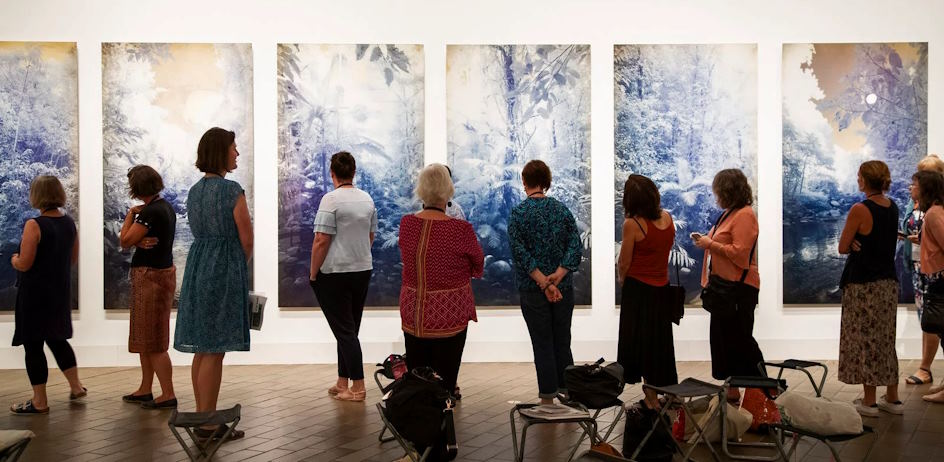
Think of an art exhibition as a vibrant playground for the imagination. Just like kids explore and learn through play, art exhibitions offer a space where students can discover new ideas, techniques, and inspirations. Have you ever wondered how these exhibitions influence art education? They do a lot more than just showcase art; they offer a hands-on experience that can ignite a student’s passion for art. Join me as we dive into how art exhibitions can transform art education from a classroom subject into a thrilling adventure.
Art Exhibitions as a Source of Inspiration
One of the most exciting aspects of art exhibitions is how they serve as a wellspring of inspiration for students. Have you ever found yourself lost in a piece of art, feeling a surge of creativity? That’s exactly what exhibitions aim to do—they ignite that spark of imagination.
Exposure to Diverse Art Forms
Art exhibitions bring together a variety of art styles and techniques. Think of it as a buffet where you can sample different cuisines. Each piece of art offers a new flavor of creativity, from traditional paintings to modern installations. For students, this exposure is like discovering a treasure chest of ideas. They see how different artists express their visions and learn that there are countless ways to create art.
How different art forms can inspire students:
| Art Form | Example | Inspiration |
| Paintings | Impressionism, Abstract Art | New techniques and color use |
| Sculptures | Classical, Contemporary | Different materials and forms |
| Installations | Conceptual Art | Innovative ways to present art |
| Photography | Black and White, Digital | Exploring new perspectives |
Interaction with Artists
Exhibitions often feature opportunities for students to interact with artists. Imagine being able to ask Picasso about his paintings or learning directly from a modern artist about their creative process. These interactions can be eye-opening for students. Artist talks and Q&A sessions offer insights into the thinking behind the art, which is invaluable for anyone studying art.
Art Exhibitions as a Learning Experience
Art exhibitions aren’t just about looking at art—they are also about learning. They offer a range of educational opportunities that can enhance a student’s art education experience.
Educational Programs and Workshops
Many exhibitions come with educational programs designed to engage students. These might include guided tours, where an expert explains the art, or workshops where students can create their own pieces. It’s like having a personal art teacher right in the gallery. Here are some examples of educational programs you might find:
| Program Type | Description |
| Guided Tours | Expert-led tours explaining the artwork and techniques |
| Art Workshops | Hands-on activities where students create their own art |
| Artist Talks | Discussions with artists about their work and inspiration |
| Educational Materials | Brochures, booklets, or interactive displays for learning |
These programs make art exhibitions interactive learning experiences. Students can not only see art but also learn how to create it.
Critical Thinking and Analysis
Another great aspect of art exhibitions is how they encourage critical thinking. When students walk through a gallery, they are prompted to ask questions and think deeply about what they see. It’s like solving a mystery—deciphering the messages behind the artwork, understanding the artist’s intent, and discussing their interpretations with others.
For example, students might be asked:
- What emotions does this artwork evoke?
- How does the artist use color and form to convey their message?
- What does this artwork say about the time or culture in which it was created?
Art Exhibitions and Community Engagement
Art exhibitions also play a crucial role in building and engaging with the art community. They aren’t just about art students; they are a way to bring together artists, students, and the public.
Building Art Communities
Exhibitions are like community gatherings where everyone who loves art can come together. They offer a space where artists, students, and art enthusiasts can connect. This sense of community is essential for fostering a love for art and supporting local artists.
How art exhibitions help build these connections:
| Community Aspect | Example | Impact |
| Community Events | Art fairs, gallery openings | Opportunities for artists and the public to meet |
| Art Appreciation | Public events and exhibitions | Educates the community about art and its value |
| Collaborative Projects | Joint exhibitions, art initiatives | Encourages teamwork and creative exchanges |
Public Art Education
Exhibitions also serve to educate the public about art. They offer a chance for people who might not be art students to learn about and appreciate art. Imagine walking into an exhibition and finding an interactive display that explains different art movements or techniques. These elements make art accessible to everyone, not just those studying it.


